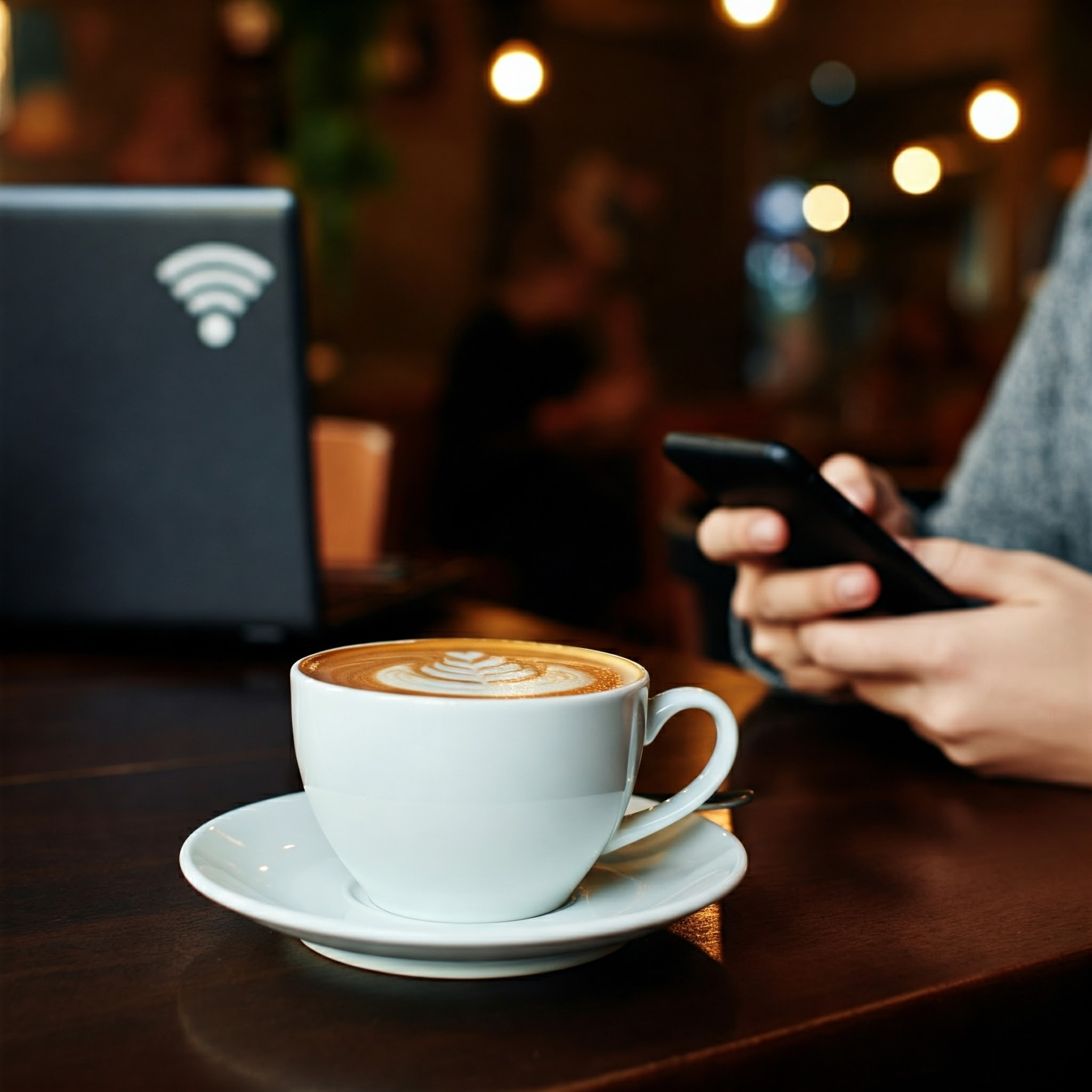
Nothing feels better than firing up your laptop over a latte—and spotting that sweet “Free Wi-Fi” sign. But before you jump online, ask yourself: what’s the real cost of convenience? Public hotspots are a playground for digital creeps and casual hackers alike, and your personal data is the prize. Instead of waiting for a messy wake-up call, let’s break down why open Wi-Fi can backfire—and how you can keep sipping safely.
What Makes Public Wi-Fi Risky?
Public networks are like leaving your front door wide open with a neon “Welcome!” sign. Here’s the ugly truth:
- No Encryption = Open Book
On most café networks, your traffic isn’t scrambled—so any passerby with basic sniffing tools can read your emails, passwords, and bank info in plain text. - Evil Twin Networks
Ever see a wifi called “Free_CafeWiFi” and thought it was legit? That name might be a Trojan horse. Cyber tricksters set up look-alike networks to lure you in, then harvest every keystroke. - Man-in-the-Middle Eavesdropping
Imagine someone slipping between you and the Wi-Fi router, reading every packet you send and receive—like a nosy neighbor reading your mail. Before you know it, they’ve grabbed your login credentials, private messages, or financial data. - Automatic Malware Downloads
Some wifi deliver more than internet access—they push malware straight to your device. One careless click or unpatched app can hand over control to a remote puppeteer.
Common HangOuts, Hidden Pitfalls
It’s not just your favorite espresso joint. These spots can all turn into digital minefields:
- Airports & Train Stations:
High-traffic hubs make it easy for hackers to blend in under the radar. - Hotels & Conference Centers:
Shared creds and spotty security protocols turn guest networks into buffet lines for data thieves. - Libraries & Malls:
“Free” often equals “unmonitored,” leaving your sessions ripe for snooping.
How To Sip And Surf Safely
You don’t have to go off grid—just follow these no-fluff moves:
- Tunnel Through a VPN (Virtual Private Network)
Think of a VPN as an encrypted tunnel through a dark alley. No one can peek inside, even if they’re lurking on the same network. I personally have some recommendation but let’s save it for another post. - Forget the Network When You’re Done
Stop your device from auto-connecting later. Go into Wi-Fi settings, hit “Forget,” and close the door behind you. - Lean on Your Mobile Data
When in doubt, tether to your phone. Cellular connections are private by default—no need to worry about eavesdroppers. - Steer Clear of Sensitive Logins
Banking, email, medical portals—save those for a trusted network or VPN session only. - Harden Your Device
Keep your OS and apps up to date, enable two-factor authentication everywhere, and tape over that webcam if it makes you feel safer.
Conclusion
Free café Wi-Fi isn’t the harmless perk it seems—it’s a low-risk, high-reward playground for anyone with a laptop and a shady agenda. But with a little savvy—VPNs, forgotten networks, and locked-down devices—you can enjoy your flat white without looking over your shoulder. Craving more no-bullshit tech tips?
Fectora’s here to help you take charge of your digital life—so you can stay connected, not compromised.
Fectora is one of the rare platforms designed specifically for individuals and families, making digital life and computer skills easy and accessible.
